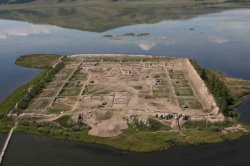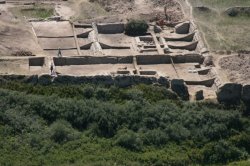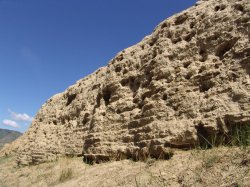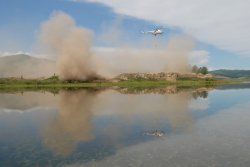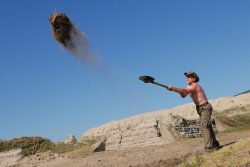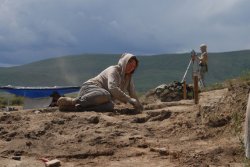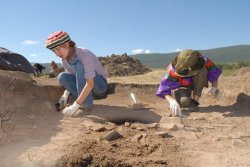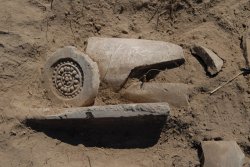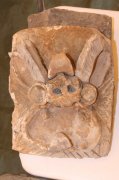Pravda.ru publishes photo-albums of travels, including those in Tuva. One of them is dedicated to Por-Bazhyn. Every photograph is accompanied by interesting commentary.
(Click the photograph to enlarge it; you may also watch it as a slide-show.)
In the south-west of Republic Tuva, high in the mountains, on an island in the middle of Tere-Khol lake, there are ruins of an ancient Uighur fortress, which was built in VIII century C.E. it is one of the most mysterious archeological monuments of the world.
Inside the fortress, the explorers discovered the foundations of many structures of mysterious purpose. Who decided that this fortress was to be built, and who designed it?
Besides that, scientists could not figure out for a long time how it was possible at all to build this fortress on the island. How did they bring in the building materials, where were the craftsmen’s workshops, where could they house hundreds of workers on such a small area?
According to a legend, one day a fountain of water started to pour out of a well within the walls of the fortress, and the khan, frightened of a flood, hurriedly abandoned Por-Bazhyn with his whole court, to hide in the mountains. The water continued to pour from the well, until Lake Tere-Khol was formed.
In its entire history of existence, Lake Tere-Khol disappeared almost entirely several times. Apparently the fortress was built during one of these “dry spells”.
Earthquakes, in the end, destroyed the fortress. Geologists and soil scientists discovered evidence of characteristic mixing of soil strata on the island.
Most of all the archeologists were surprised by the very refined cultural stratum of the fortress. Several women’s adornments and iron artifacts – tat is all that the residents of the town lost during many years of habitation. Besides that, only a single burial was discovered in the vicinity, and none at all on the grounds of the fortress itself.
All this is suggestive of the possibility that Por-Bazhyn, apparently, was a summer residence of Uighur khans or high ranking officials.
In the stories of local people, on dark nights, specters on horseback can be seen, slowly riding through the ruins.
Photographs by participants of the expedition.

